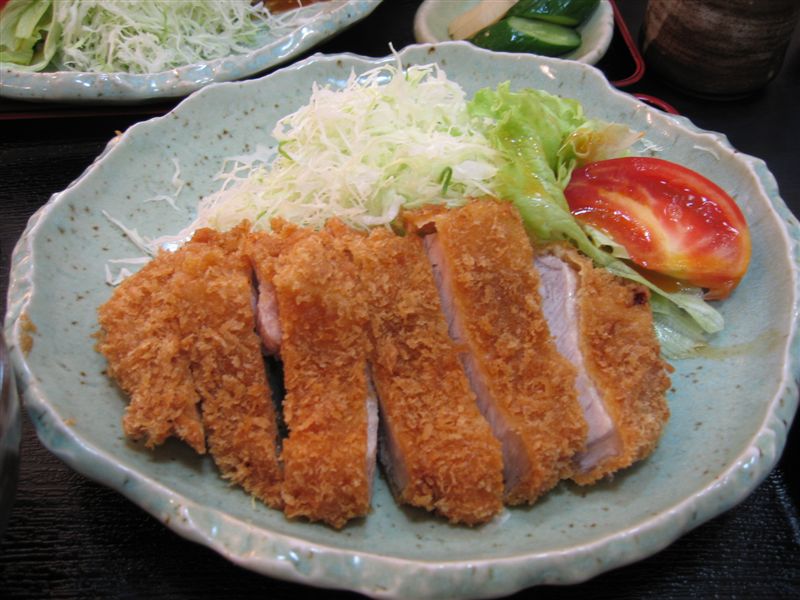My CIP was the pottery studio. Catherine had the same CIP, and it was nice to have someone with which to navigate unfamiliar situations. Every Saturday I spent about five hours making Japanese-style cups and bowls of various sizes. Before, I never paid much attention to the difference in shape between Western and Japanese dishware, or the fact that most Japanese cups and bowls have a foot. Going only once a week, making pieces and getting to know people has been a slow process. I’ve made several things and given them to sensei to bisque-fire, but as far as I know none of them have been fired yet, so I haven’t glazed anything.
Starting out at the studio, I was pretty nervous. I hadn’t done pottery in about two years—and worst of all, the first day, we threw on the wheel. Needless to say, I was pretty bad; I was never very good at throwing. Someone at the studio spent that whole day teaching us how to wedge and helping us throw. I’d never seen that method for wedging clay before—the clay ended up circular, flower-like with ridges coming our from the center. And, as I soon found, it was very difficult to replicate. To this day I haven’t mastered it; I’ve had to stick to the basic wedging method I learned in high school. I’d like to learn the more advanced wedging method before the year is through, since wedging is the basic of basics in pottery.
When we’d finally wedged the clay sufficiently (one way or another), we were ready to throw. I was very surprised when the person helping us placed the entire, very large, chunk of clay on the wheel. Before, I’d always chosen a chunk according to the size of final piece I wanted to make. I’d only ever seen professionals put a huge piece on clay on the wheel, center it all, then use only the top to form a piece. This allows them to simply cut the finished piece from the top when finished, and use the already-centered clay at the bottom to make more and more pieces. I had a hard time with this method, because the more clay you have, the harder it is to center.
I never realized how easy we students had it in high school; there was a slab machine for making perfectly flattened, consistent-thickness slabs of clay, and a coil machine for making endless coils of the same size. At the studio, I’ve learned to make coils myself, by rolling the clay between my hands in a way I’d never thought of. Doing everything by hand seems more authentic, more traditional. I like it. (However, I have no idea how I could make a slab of consistent thickness by hand…) That being said, not everything in the pottery studio is done by hand. I’ve seen a lot of people use molds to mass produce things like cups so that they’re exactly the same. It’s fascinating, and I’d like to try it sometime.
Since the first day, I’ve stuck to what I’m good at: making pieces by hand. It is also much easier to talk to people when working at a table than at the wheel. Little by little it’s gotten less awkward, on both sides. At first the studio didn’t seem to know what to do with Catherine and me, but I think they’ve gradually become comfortable having us there. Indeed, the pottery studio isn’t some big, impersonal company, but rather has a very friendly, personal feeling to it. A little over ten people come every Saturday, and seeing some of the same faces every week is nice; it allows me to talk with people beyond just my name and the fact that I’m studying abroad.
A few times some people at the studio have commented on how I work diligently on a piece, sometimes spending hours at a time making it the shape I want. When they complimented my determination, I was happy, but surprised. In high school, where we only had 50 minutes to get out all our materials and tools, work on our pieces, and also clean up, perfectionism was a luxury that no one could afford in order to get all our projects done in time. I like that at the pottery studio, you can work at your own pace and focus on a piece as long as you want. I’m really glad that for my CIP I’ve gotten to work on pottery, which I’ve loved since my freshman year of high school, my first pottery class.
My second CIP was the Kyoto Cooking Circle. I now realize just how hard it is to make the nightly meals I take for granted. I look forward to making some of the things I learned for my family in America. One thing about the Circle surprised me. Though there was a relaxed air throughout the cooking, after we had eaten, we did aisatsu. One by one, each person introduced themselves and talked a bit about the cooking experience of that day. The sudden formality caught me by surprise, and I wonder if similar bouts of formality are common at other kinds of relaxed events.



フリーマンさんが陶芸教室でがんばっている様子がよくわかりました。熱心に参加したからこそ、陶芸教室の皆さんに受け入れてもらえたのだと思います。来学期、陶芸教室でどんな作品を作る予定ですか?
そうですね。ありがとうございます。
来学期、作った物で絵を書いて、焼くつもりがあります。まだ、一回焼いた物しかないんです。